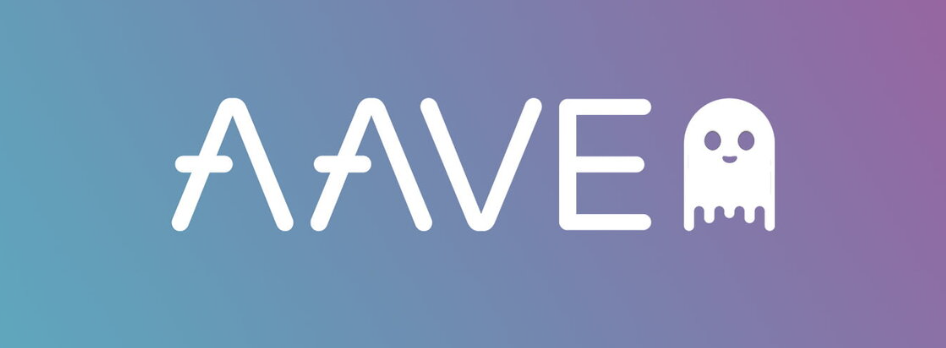Aave: Open Source Liquidity Protocol
By Rayna Ishihara | Crescent City Capital Market Analyst Intern
What is Aave

Aave is a decentralized finance (DeFi) platform that allows users to lend, borrow, and earn interest on cryptocurrencies and real-world assets without the need for a centralized intermediary. It operates on the Ethereum blockchain and uses smart contracts to manage assets, eliminating the need for trust in a specific institution or individual. Users can take out loans using cryptocurrency as collateral and earn returns by lending out their crypto. Interest rates are paid and received by borrowers and lenders, respectively, without the involvement of a bank or loan manager.
In common with other decentralized lending systems on Ethereum, Aave requires borrowers to provide collateral before they are able to borrow funds. This protects lenders from losing money due to defaults and allows Aave to liquidate the collateral if its value drops too much. Borrowers receive funds in the form of an aToken, which is pegged to the value of another asset, and lenders receive interest on their deposits. Borrowers can post collateral in one cryptocurrency and borrow in another, allowing exposure to different cryptocurrencies without owning them outright.
Aave was founded by Stani Kulechov and a team of developers who initially released a lending and borrowing network for crypto assets called ETHLend in November 2017. The system required technical tweaking to enable seamless borrowing and lending, and worked by posting borrow and lend orders to form a money market. In September 2018, the project was rebranded to Aave, which means “ghost” in Finnish. The native token changed from LEND to AAVE, and the team created an automated protocol with pools for borrowing and lending various cryptocurrencies.
Aave Tech
Smart Contract
Aave uses smart contracts to automate the borrowing process, including calculating loan terms, collecting collateral, and distributing borrowed cryptocurrency. This eliminates the need for a third-party intermediary, such as a bank, and allows for decentralized finance (DeFi) to operate without middlemen. Smart contracts automate transactions and remove intermediaries from asset-trading, futures contracts, and savings accounts.
Flash Loan
Aave offers Flash Loans, which are almost instantly issued and settled loans that require no upfront collateral. These loans take advantage of the short time interval between blocks on the Ethereum blockchain. Borrowers must repay the borrowed funds, plus a 0.09% fee, within the same block, or the transaction is cancelled. Flash loans can be used for trading and to maximize profits from other Ethereum-based systems. However, flash loans have also been used in successful attacks on lending systems built on Ethereum, resulting in the loss of deposits. Aave Flash Loans are designed for developers to request a loan, make an exchange, and repay the loan within the same transaction.
Liquidity Pool
Aave uses a liquidity pool system for lending and borrowing, allowing for pool-to-peer lending instead of peer-to-peer lending. Users deposit digital assets into liquidity pools, which the protocol can then lend out. Depositors receive aTokens in return, which provide a cut of flash loans and interest on deposits. Interest rates vary depending on the asset being borrowed or deposited, and the amount of surplus liquidity in the pool.
Aave Token
AAVE is the native token of the Aave. Aave is a system of lending pools where participants deposit funds they wish to lend, which are collected into liquidity pools for borrowers to draw from. Aave issues two types of tokens: aTokens for lenders to collect interest on deposits, and AAVE tokens, the native token of Aave. Holding AAVE offers several advantages, such as fee discounts for borrowers who use it as collateral and for loans denominated in AAVE. AAVE owners can also pay a fee to view loans before they are released to the public and can borrow slightly more if they post AAVE as collateral. The protocol is operated and governed by a decentralized autonomous organization (DAO) of AAVE token holders who vote on decisions.
Aave has a maximum supply of 16 million AAVE tokens, with around 12.5 million currently in circulation. The system uses most of its fee revenue to buy back AAVE tokens in circulation, which are then burned to regulate the supply and increase protocol liquidity. The market cap of AAVE is determined by multiplying the number of tokens in circulation by the current market price, which also determines its market rank and dominance compared to other cryptocurrencies.
Recent Updates
The live AAVE price on July 17th is $77.89 USD with a 24-hour trading volume of $71,780,843 USD. It has a circulating supply of 14,484,677 AAVE tokens.
Summary
Aave is a decentralized finance (DeFi) platform that allows users to lend and borrow cryptocurrency using smart contracts. The platform uses a liquidity pool system for lending and borrowing, allowing for pool-to-peer lending. Users deposit digital assets into liquidity pools, which the protocol can then lend out. Depositors receive aTokens in return, which provide a cut of flash loans and interest on deposits. Interest rates vary depending on the asset being borrowed or deposited, and the amount of surplus liquidity in the pool. AAVE tokens are the native token of Aave and offer holders several advantages, such as fee discounts for borrowers who use it as collateral and for loans denominated in AAVE. The protocol is operated and governed by a decentralized autonomous organization (DAO) of AAVE token holders who vote on decisions.
References
https://www.kraken.com/learn/what-is-aave-lend
https://www.investopedia.com/what-is-aave-6823617
https://decrypt.co/resources/what-is-aave-inside-the-defi-lending-protocol
https://www.coindesk.com/learn/what-are-liquidity-pools/
https://kriptomat.io/cryptocurrencies/aave/what-is-aave/
https://coinmarketcap.com/currencies/aave/

